Art & Exhibitions
Christian Viveros-Fauné Selects 15 Artists to Watch in 2015
These artists are on the cusp of crucial developments or major recognition.
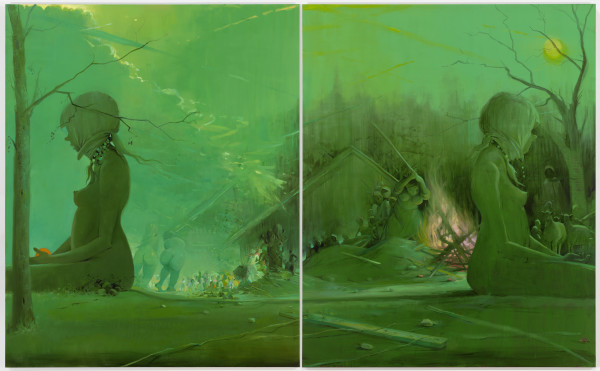
Image: Courtesy of David Zwirner.
These artists are on the cusp of crucial developments or major recognition.

Christian Viveros-Fauné

Here is one thing people across the board seem to agree on: Today, there is a growing discrepancy between critics’ judgments and those the market makes. For that very reason, it has become increasingly important to take note of certain artists’ evolutions and their independent projects—regardless of their age and auction prices. (See Which Artists Conquered the Market in 2014?) Not a speculative or peer-driven guesstimate of emerging talent, this list is intended to identify mostly known (and sometimes well-known) artists who are on the cusp of crucial developments and/or major recognition. Look out for these artists and the critical contributions they will make to visual art in 2015.
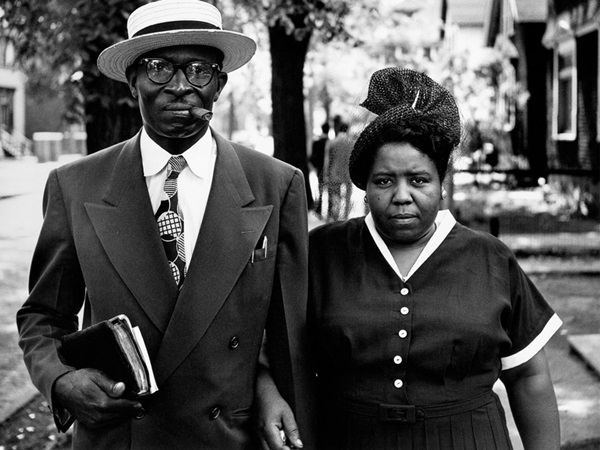
Gordon Parks, Husband and Wife, Sunday Morning, Detroit, Michigan (1950).
Photo: courtesy of Museum of Fine Arts Boston.
1. Gordon Parks
From the film director who brought us the movie Shaft and the genre of Blaxploitation comes a luminous black and white vision of segregated 1940s America that had been thought lost to history’s dustbin. The first African American photographer to be hired full time by LIFE magazine, Parks (1912–2006) returned to his hometown of Fort Scott, Kansas, in 1950 to make a photo-essay he titled “Back to Fort Scott.” On view at the MFA Boston until September, these photographs depict life as it was once lived in the nation’s “blacktown.” Not surprisingly, LIFE never ran the story, which underscores the importance of these pre-civil rights images today. Another show of Parks’s photos, “Gordon Parks: Segregation Story,” is also on view at High Museum, Atlanta, until June 21. Last year, filmmaker George Lucas and his wife, Mellody Hobson, gave $25 million to University of Chicago Laboratory Schools to built a new arts center on the condition the facility be named after Parks (see George Lucas and Wife Donate $25 Million for Chicago Art Center).
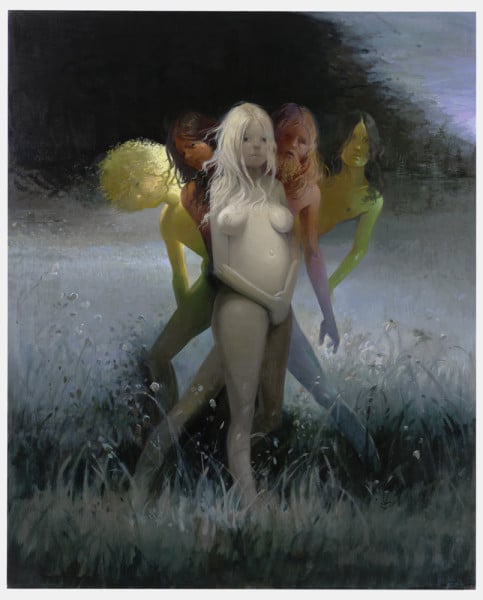
Lisa Yuskavage, Hippies (2013).
Photo: courtesy of David Zwirner
2. Lisa Yuskavage
Lisa Yuskavage’s newest paintings go on view this week at David Zwirner gallery. Those who thought they knew her as an artist fixated on radiantly hued parodies of the female form are in for a shock: paintings like Dude Looks Like Jesus and Dude of Sorrows turn certain blinkered clichés of “the male gaze” in on themselves, while simultaneously celebrating connections to art historical sources like Albrecht Durer, Botticelli, and Caravaggio. Hippies and a certain blissed out attitude towards visual culture are a dominant motif; so is the black eye that often follows sympathetic scrutiny. A 25-year survey of the artist’s powerfully transgressive paintings follows in September at the Rose Art Museum. (Also check her out in a video series from the Met—see Watch Kehinde Wiley, Tom Sachs, Xu Bing and Lisa Yuskavage Discuss Art in the Metropolitan Museum.)
3. Fernando Bryce
A recent émigré to New York, the Peruvian-born Bryce has left his Berlin digs, where he spent more than two decades, to turn his hand to investigating history from the vantage point of the world-historical juggernaut that is American culture. Through what he calls “mimetic analysis,” the artist hand-reproduces magazine advertisements, pamphlets, press images, political propaganda, and official documents to fashion large-scale drawing installations that highlight the spectacular triumphs and failures of politics and mass culture. His November show at Alexander and Bonin, for which he is currently doing research at MoMA PS1’s library in Queens, will focus on 1950s Cold War culture. It promises to be much greater than the sum of its parts.
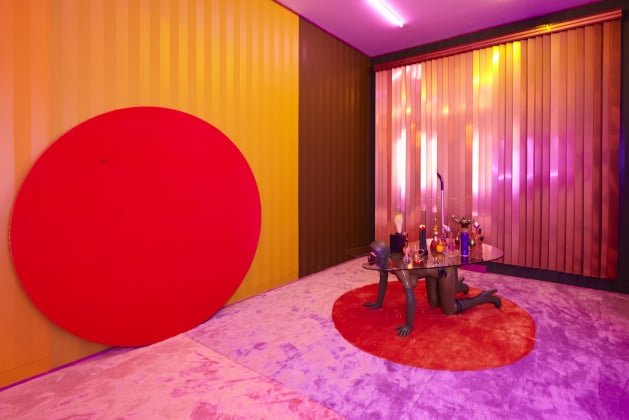
Alex da Corte, Installation view of Die Hexe (2015).
Photo: courtesy of Luxembourg & Dayan.
4. Alex Da Corte
Installation art’s new wunderkind, Da Corte has wowed viewers around the world with his walk-in environments that mix colorful tableaux with scads of high and low cultural references. A young artist with minds to dazzle, he remains very much on the move. Between his critically acclaimed March 2015 exhibition at Luxembourg & Dayan (see Alex Da Corte’s Twisted Installation Channels Blue Velvet and Pee Wee’s Playhouse) and his first solo museum show at Mass MoCA in March 2016, the Philly-based artist has prepared yet another synesthetic extravaganza—this time at Milan’s Gió Marconi gallery. It opens April 23.
6. Noah Davis
A brilliant painter in the moody, pared-down style of Peter Doig and Neo Rauch, this ex–Cooper Union grad is one of the most compelling artists to come out of an increasingly heterogeneous LA scene. A master of cool colors and spatial dissonances, Davis’ unique take on painting features African-American characters and surrealist narratives. As oddly affecting as found photographs, his canvases are currently on view at the Bruce High Quality University’s (BHQFU) brand new Foundation University Gallery (FUG), alongside work by artists such as Karon Davis, Henry Taylor and Lyle Ashton Harris—all of whom collaborate with L.A.’s Underground Museum.
7. The Underground Museum
A highly experimental not-for-profit founded by Noah Davis in central Los Angeles West Adams/Crenshaw district in 2012, The Underground Museum is a 6,000 square foot alternative space devoted to exhibiting contemporary art in a disadvantaged ZIP code as well as to entertaining artists’ ideas about contemporary art. A recent show includes emerging artists alongside figures like Robert Heineken, Wallace Berman, Jeffrey Vallance, and Chris Burden. Just this month, the fledgling institution-cum–arts-collective was honored with LAXART’s 10 Year Anniversary Artist Grant for its artistic contribution to the community (see tk).
8. Barbara Kasten
To paraphrase one astute museum curator, people should continually question who gets to be a contemporary artist today. That goes double for Barbara Kasten, a long under-recognized artist working in varied yet evidently sympathetic media like sculpture, painting, theater, textile, and installation. The sprightly 79-year-old creator is finally enjoying her first major survey, “Barbara Kasten: Stages,” at Philly’s ICA. The exhibition, which includes a newly commissioned “video-sculpture,” is up through August 16. (New York’s Bortolami gallery is also showing her, through May 2.)
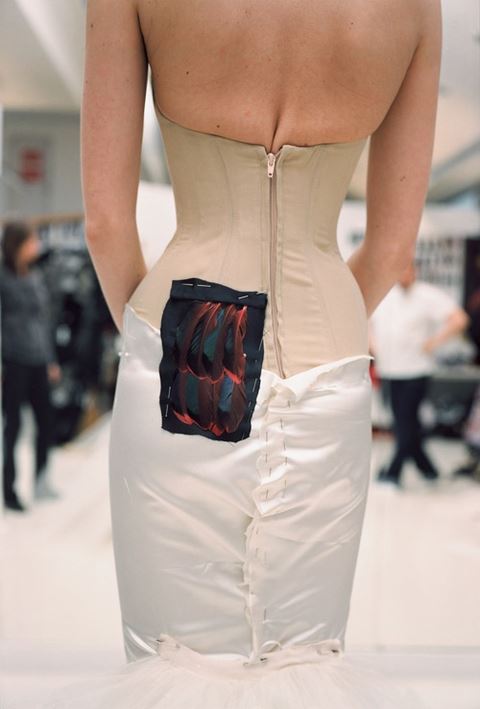
Photo: Nick Waplington from his book ALEXANDER MCQUEEN: WORKING PROCESS via artbook.com.
9. Nick Waplington
Nick Waplington’s career as a photographer began on an English housing estate at the height of Margaret Thatcher’s war on labor and the poor. From those early efforts came his book The Family, a warts and all portrait of down and out living in Britain. An unlikely choice to photograph high fashion, his “dirty, messy style” turned out to be the perfect foil for the acerbic creations of the late designer Alexander McQueen (see Alexander McQueen Mania Sweeps Over London). The designer wanted his clothes to “reflect the silliness of our age”; Waplington pegs that in “Nick Waplington/Alexander McQueen: Working Process,” at Tate Britain through May 17. Waplington will also have work on view at the Brooklyn Museum in February 2016.
10. The Bruce High Quality Foundation
Not content with the success of their eponymous university—BHQFU—the Bruces push on, exhibiting widely while continuing to expand on the ideal of innovating artistic platforms for the free exchange of ideas. Their newest addition is the Foundation University Gallery (FUG) located just blocks away from their fully registered, non-degree granting 501(c)(3) (see Bruce High Quality Foundation Launches FUG Art Space). Were you tempted to dismiss them as Ned Flanders–like do-gooders, you’d be flat wrong. As the anonymous art collective writes on its website: “an art world built solely to feed the industry isn’t an interesting place to live.”
13. Brian Maguire
An Irish painter and filmmaker with a nose for social engagement, Brian Maguire has worked on and off in Juárez, Mexico, since 2010. The result of his labors are large scale canvases—featuring open brushstrokes and rough paint handling—that take the poetry and exploitation out of dismembered bodies and portraits of victims of violence, while inevitably leaving guilt and rubber-necked voyeurism intact. A thoughtful yet shocking painter’s report from the murder capital of the world, Maguire’s work is currently on view in Chelsea at Fergus McCaffrey. His paintings will also be included in the 2016 Beijing Biennial.
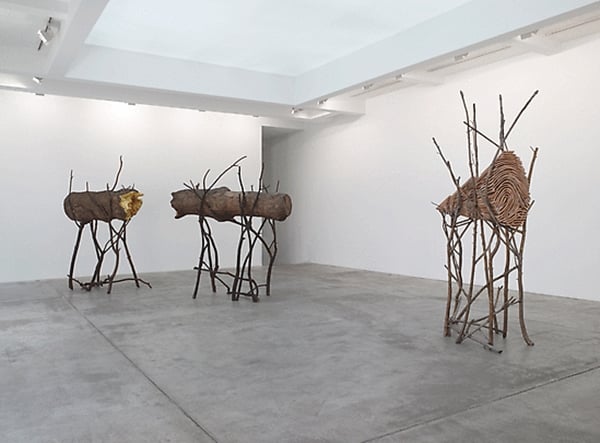
Giuseppe Penone, Installation view of Le Corps d’un Jardin (2013).
Photo: courtesy of Marian Goodman.
14. Giuseppe Penone
After his recent mini-survey at Marian Goodman gallery, Giuseppe Penone is due to take his poetic analogies to the Nasher Sculpture Center in Dallas in September. (The Nasher was one of the beneficiaries of a preview gala kicking off the Dallas Art Fair—see Dallas Art Fair Draws Daring Collectors and Adventurous Dealers.) A show that will feature works in a variety of humble and classical materials—including wood, stone, metal, plaster, resin, leaves, and marble—the display will underscore Penone’s gift for revealing the hidden connections between nature and visual culture. Our second Gilded Age could use more Penone-inspired art; that, and a general revisiting of arte povera.
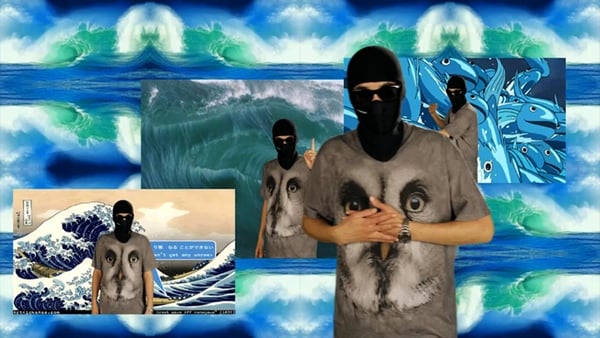
Hito Steyerl, Liquidity, Inc. (2014).
Photo: courtesy of ArtSlant.
15. Hito Steyerl
German filmmaker and theorist Hito Steyerl is already a bona-fide fixture on the film festival and curatorial circuit, but her art-as-theory promises to win even more adherents in the upcoming year, despite its frequent promotion of unexamined clichés of “progressive” hacker culture (see Hito Steyerl’s Artists Space Show Mixes Money, Violence, and Art and her inclusion in The 10 Must-Read Art Essays From March 2015). The recent winner of the first EYE Prize, her current retrospective at Artists Space and her upcoming presentation at next month’s Venice Biennale will only strengthen her position as our era’s digital art guru.